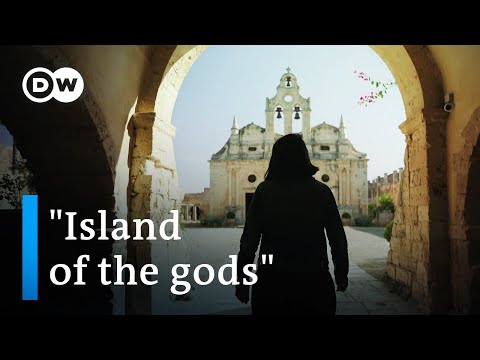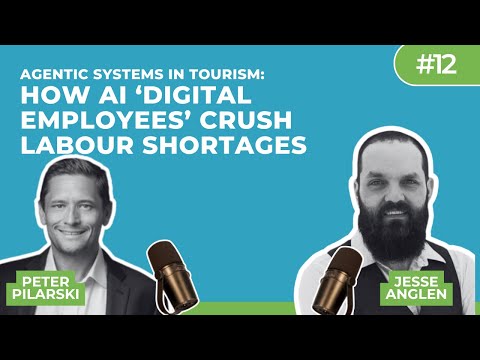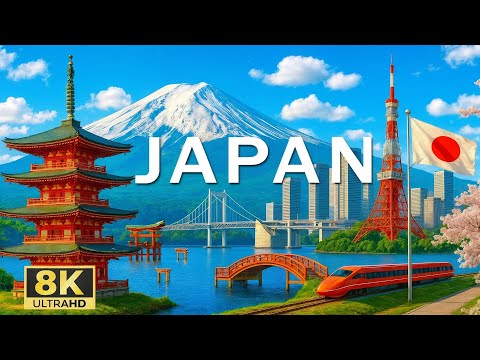Exploring Crete, Greece - Mediterranean journey | DW Documentary

The Mediterranean was once one of the most important crossroads at the heart of the ancient world. Today it has become a barrier separating Europe from Africa. Is there anything left of a past once shared? And what do today’s distinct cultures have in common? Searching for answers, journalists Sineb El Masrar and Jafaar Abdul Karim travel the coasts of the Mediterranean, in search of answers. How do you see yourself, as Tunisian Jew? Yes, with all my rights and duties. How do you afford to feed all these animals? God stands by us. This is an exploration of people and their dreams - A Mediterranean Journey A mosque without a minaret, a lighthouse like the ones in Venice and buildings with the names “Villa Venezia“, “Il Padrino“ and “Casa Leone”? Where am I? One thing’s for sure, we’re on the Mediterranean.
On an island ruled by Italian trading powerhouse Venice for 400 years. Ottoman influence is also evident. Both left a lasting mark on the architecture of the island, primarily in the port towns. The answer: Crete. And Crete has so much more to offer than tzatziki.
Crete is the fifth largest island in the Mediterranean. It lies south of the Greek mainland. The capital is Heraklion. My journey begins in Chania in the west of the island. To be precise, in a tiny street called Odós Skrídloff, or Leather Street. The stores here sell bags, belts and shoes - all made in Greece.
I could actually use a new pair of sandals... Hello, I look for something special sandals. I can make you something like this. Oh, it looks like Hermes Style. Yes, I like it. I would take it.
Yes. Do I have to take seat here? Have a seat and we start to take the measures. With the socks? With the socks is no problem. Georgios Pirpinakis still makes everything by hand. The shoemaker begins by taking the customer’s measurements.
The sandals are made in a factory on Crete a regional craft with a long family tradition. I see also the boots over there. They are warm. Why do you produce boots here on Crete? This is the traditional Cretan boots.
When they make big dances, Cretan dances, they dance with two uniforms. The one uniform was the black Stivania, the other uniform was with white Stivania. But in Greece there are a lot of dances, different kinds Okay, because the Greeks like dance? We like to dance, yes. With my new sandals on, I leave Chania for the Cretan hinterland. There are olive trees everywhere! Greece is one of the world’s top producers of olive oil, after Spain and Italy.
There are more than 30 M million trees on Crete alone. The annual yield is between 150,000 and 180,000 tons. Some of that comes from Ióanna Paraschakis’ olive oil factory. Most farmers don’t have their own press and bring their harvest here. Now we are on the first mill, your family worked a long, long time with this kind of mill.
Yes, it was running with the donkeys. This is approximately 200 years ago. And now the donkey was hooked on that long piece of wood there, so the donkey was rotating and now those three stones were also rotating and they were breaking the olives, this was making a pulp with the seeds.
How long it takes to work like this? Timewise I don’t know, I’m estimating approximately 6 Greek coffees. 6 Greek coffees? Yeah, now I’m down to 1. So it’s a huge difference.
Harvesting was also an arduous job. That’s what they were picking with. And now they were waiting for the olives to fall from the trees to the ground. Ah, okay. Yeah and now you had two choices, you could either pick them up one by one by hand or you can have one of these. And now they were pushing that on the ground like that.
And now the olives were getting stuck on those little needles and now when the wheel was rolling, they’re being thrown into the bucket. Okay, cool. It’s harvest day on Ioanna’s farm. These days, These days machines make fast work of the process. So now that’s what we harvest with today. And now that’s a “small brush”, that’s the name of it and so that’s held on the branches.
So that just vibrates the branches, and it makes the olives and some leaves fall on the net that I put under the tree and then you get on your knees and you pick the olives and the leaves up in a bag or in a crate and they are brought to the production line. Can you show me? I can’t show you, my husband can. On Crete, harvesting begins in November the olives are either picked by hand, or using machines. First, the fruits are cleaned and ground up. Then the oil is extracted.
When we’re talking about the quality of the olive oil it has a lot to do with the acid of the olive oil. Normally if you’re having an “extra virgin”, you have to have an acid under 0.8. The lower you go, the better the quality. Okay, so zero...
This is 0.3. Okay. Oh wow. Here we have a lot of it, honey, we use it. In Germany you guys have beer, in Greece we have olive oil.
Okay. You said you do everything with your olive oil, but sometimes you bought olive oil from other productions or the supermarket? Sweetheart, this is a sacred product. I am married to a Greek man for 21 years if I cook with other olive oil, he’s gonna divorce me. Not far from the olive oil plant is one of the island’s most revered sites.
The Arkadi Monastery is a national sanctuary. In 1866, Cretan rebels and their families sought refuge here from Ottoman troops. Instead of surrendering, more than 500 men, women and children made the ultimate sacrifice: they blew themselves up.
What makes me especially sad is that this is a beautiful, peaceful place where things are growing and flourishing. And the sad thing about this place is that brutality and violence are so often found in so many different corners of the world. The Arkadi Monastery is still home to a secluded community of Greek-Orthodox monks. On Sundays, the church is open for prayer services.
It’s also home to a clowder of cats. My next stop is Margarites a small inland town located between Chaniá and Réthimno. Well, I’ve got an appointment soon, but I’m also pretty hungry and I’ve got a bit of time. I’ve spotted a taverna and I’m going in. Good evening.
Good evening. Can I get something to eat here? Yes. Yes? OK, then I’ll take a seat. Thank you. Can I help? Yes. Yes? OK. Thank you. Is this a main course or an appetizer? That’s a meze.
Before dining, we eat mezes. Ah mezes, yes, I know about that from Lebanon, from Morocco, where my roots are. And what about Greece, what do you eat here? Olives, stuffed vine leaves, tzatziki, eggplant, zucchini... And olives, I’ll help too. Great.
What are we making now? Tzatziki. Tzatziki, OK let’s start. I’ll roughly grate the cucumber.
Mmmm, that smells really good, very fresh. Yes, these are good cucumbers, because they’re from Crete. Then we’ll grate the garlic. garlic. OK. Garlic is very good for you.
So, it’s all nicely blended. Shall I add the oil? Yes. Yes? OK. Lovely! It’s ready. May I? Yes. Yes! Thank you.
After the meze at Eleni’s taverna, I’m ready for my next appointment at the Keramion pottery. Pottery is a craft that’s been practiced on Crete for centuries. So, now I’m at the pottery and straightaway, I’ve discovered two strange objects, a cup with a hole in it and another item that looks vaguely obscene, also with a hole in it. I’m going to ask the owner for an explanation.
The work of Giórgos Dalamvélas blends the traditional and the modern. The artist works mainly with local clay that only needs firing once. What are you doing there? I try to make a little bottle.
I’m using local clay, the black quality, a mountain clay from here. I think it’s nice to try it yourself. What do you think? Yeah, I would like to.
Please. Okay? Yeah, I’ll come over. So, so we start.
Always hands together, from the center down. For the first time it’s impossible for anyone. Okay, but now you have a little shape, so now you have to choose if you want to make it, to throw it up or you want to press it from the inside to make it flat, that’s a dish, that’s a plate. Okay, yeah, I would like to try a dish, a plate.
Stop. We need to put it back in the center. When it starts dancing, ehm, means that we have to stop. We have to cut it and this is your pot.
Okay, my oval pot. Yes. A work of art... highly individual and unique.
The workshop contains ceramics that have been very useful for centuries. Every bottle they produce here, they produce it for a special purpose. For example: Bottles for olive oil and wine. This is for the honey, they put the honey inside, they cover it with a bit of cotton or a ceramic lid and around the rim here they put everyday water.
You know why they put water here? No. What do you think? To protect the honey from the? Ah, the little bees? Ants. Ants, oh OK. Ameise likes honey very very much. But they cannot swim. Another clever idea, the design comes from 750 BC, I call it watering can. Because if you will press it in the water for a few seconds, because of the pressure the pot fills now from the bottom.
Then we put our thumb on the top of the can so you can hold the water, we can bring it where we like it and we lift our finger the water falls like a shower. Like a shower, yes. I’ve got a new shower.
750 BC that’s amazing, hm? Crete is the largest Greek island. It has gorgeous stretches of coastlines and charming port towns like Ágios Nikólaos interspersed with picturesque mountainscapes. Huh, as you can see, I’ve rented an e-bike so I can explore this beautiful landscape in a different way, instead of on foot or in a boring old car. Wish me luck! The five highest peaks on the island are all up to 2500 meters above sea level.
The coast is visible from pretty much anywhere. Crete is home to a variety of raptors, including bearded and griffon vultures, as well as the rare golden eagle. From the capital Heraklion in the north, I set off for Matala a coastal resort steeped in history. The weather can be unpredictable according to the season I’m here in December. Right now I’m in southern Crete.
These are the caves of Matala. There were loads of hippies here in the 1960s. Many of them came from the US, because they didn’t want to go to war in Vietnam, but there were also a few celebrities among them, including Bob Dylan and Cat Stevens. These are the caves where the hippies lived. Modern Matala is much bigger than it was back then but the expansive sandy beach hasn’t changed, neither have the old fishermen’s houses converted into bars and restaurants.
Not far from Matala is the mountain village of Kouses. The strings of chilis look amazing. But I’m looking for a particular spice. I’m looking for little, small pink berries. Do you have some?
Yes, we have some. Wonderful. Yes yes yes, I would love to buy a little, small bag. This store called Botano, run by Yannis Giannoutsos, smells of local herbs such as thyme and oregano, but also of exotic spice blends transported here by sea from faraway places. But do you have more pepper sorts? I can show you some. Yeah? Okay, I would love to.
Be careful, because it’s a little bit hot. Okay, put it in my hand. A little bit. Stop.
Mhm stop. It starts to fire in my mouth. Are you interested only for peppers? Or No, of course, let me see what you have. It’s like something...
Ah, lemon salt. Okay. Oh, okay, it smells like... Pure lemon. Ja, the lemon cake of my “tante”, ehm of my aunt. It’s very intense and Ah, very good. So we can make the salt how you want it.
I would like to put some lemon in it. Is that possible? Yes, we can choose a quantity, you can choose your own quantity. Okay. Can I add some chili flakes?
It tastes and looks cool. It looks like saffron. It’s really important to also how it looks.
And we have to find a name for this. Sineb’s lemon chili heaven. Lemon chili heaven, na super! Over a cinnamon tea, Yannis tells me that the spice store used to be the village pub. Today, there’s only healthy drinks and spices for sale here, attracting not only tourists, but customers from the Greek mainland too.
It was my hobby. I started to cultivate my own “basilikum” and my own kind of “Mint”. And we have an organic cultivation. Slowly we made it biodynamic. We have to leave something for our kids, for this planet.
Yes, the following generation. Yes, I hope, I believe that we will do it. Inshallah...
How did you say that? Inshallah, when uhm, inshallah is an Arabic word... Yes, I know it from the North, we use it. Ah you use it, okay.
Yes, inshallah means something. If god wills it, that’s inshallah. Bravo, inshallah.
The Cretans call their land the “island of the gods”, the supposed birthplace of Zeus. They believe that the largest Greek island harbors great positive energy. And nothing should be allowed to interfere with that not even climate change. That’s why these two scientists Ioannis Daliakopsulos and Anargyros Sideris are working on a project to help the agricultural sector weather the effects of global warming.
Everything’s fine, the second conceived connections are solid. What is it here? This is a microclimate station; this is used to measure earth temperature and humidity. And there are also underground sensors. With this cable here? The underground sensor measures also the soil temperature. Why is it so important to know more about the temperature inside the earth? These two aspects are important, because they deal with water quality and water quantity in your shore. As I discovered earlier, Crete is an olive growing stronghold in the Mediterranean region.
The industry uses almost 85% of freshwater reserves. Because of the extreme heat the soil moisture was lost and then the connectivity was lost. This can become a really big problem, especially when you don’t have this ground covered. Then this will eventually erode away and you end up to a state that is called desertification. It’s also not to just, ehm, climate change is not just the problem of trees and nature it’s a huge problem.
No, it’s a social problem. Droughts, water shortage these are pressures that eventually drive migration. I think it’s a huge problem in the whole Mediterranean area. Currently we’re running a project with other Mediterranean countries outside Europe that involves Morocco, that involves Israel.
To bring all these countries together, exchange know-how and understand what the problems are and how we’re gonna solve it in the same way. Community is important for the Greeks, and dance plays a key role in fostering this sense of belonging. Traditional Greek dancing as a symbol of national identity gained global fame in the 1960s with the movie “Alexis Sorbas”, set in Crete. Mikis Theodorakis composed the Sirtaki music that gets everyone’s feet twitching.
You have danced so beautifully. Thank you. Welcome. Most people think about Greece they often think also about Sirtaki. I would love to learn a little bit of Sirtaki. Would you teach me? Sure, I’d love to, come with me, yes! Your hands here, and one, two, three, four, five. One, two, one, two, very good Hello! Hello! What are you doing, are you dancing? Yes, do you want to join in? I’d love to.
Come on then.. Antonia Pantelaki has been teaching in Archanes for many years. She’s so good at her job, she’s even managed to teach ME the island’s most famous dance... So, my trip to Crete has drawn to a close. What did I like most about it? The way people here feel so connected to their island, for example when they’re dancing sirtaki. It’s such a fantastic mood-booster, I’m really happy I was able to learn some of the steps.
And now I really do understand why people come back here, I’ll certainly be doing the same. And above all I understand princess Europa, abducted by Zeus and brought to this island. Instead of returning home to her father, she opted to stay!
2022-09-28 08:02


